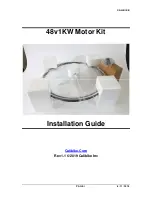
14
TROUBLESHOOTING
Since malfunction may be caused by one or more faults, find out the real cause and then take corresponding solutions for
troubleshooting. In you have any question, please consult professional technicians.
TROUBLE
SHOOTING
Since one or more failure causes may cause the malfunction, you should �nd
out the real cause and then take the corresponding solution to deal with the
problem. If in doubt, please consult a professional technician.
Type
Fault phenomenon
Analysis and solution
battery
Instrument
The battery cannot be charged
1. The instrument cannot be
turned on /The button on the
LED screen is pressed without
any response
3. The + and - buttons cannot
be pressed simultaneously for
LED setting.
4. The display keeps showing
garbled or black screen after
riding for a while.
5. The speed described in the
Manual cannot be reached
6. The instrument does not
display the speed.
2. The instrument cannot save
the settings.
1. Charger failure: If the green indicator is on when the charger is
connected to the battery for charging, use a multimeter to measure
whether the voltage at the output port of the battery is 42V (when
the green indicator is on after the charger is connected to the power
supply and then connected to the battery for charging, pull out the
connector between the charger and the battery for measurement).
If the voltage is lower than 42V, the charger is damaged and needs
to be replaced.
2. Battery failure:
a. Use a multimeter to measure the voltage at the battery discharg-
ing port, and judge whether the battery pack is damaged or under-
voltage protected based on the voltage.
b. If the voltage of the battery pack measured by the multimeter is
0-5V, it indicates that the battery pack cannot be charged due to
overdischarge. In this case, the low-voltage charger (0-3V) is requ-
ired to charge for about 3 hours to activate the battery pack that can
operate properly after being fully charged.
d. If the battery cannot be charged due to damage of its protection
board, replace the battery pack.
1. Check whether the outgoing line of instrument button falls off or
is damaged.
2. Check whether the instrument outgoing line and the connection
with the controller terminal are normal.
3. If the connecting wire is connected properly but the instrument
fails to work, replace the instrument.
1. Adjust the speed according to the instrument manual.
2. If the speed described in the Manual still cannot be reached after
adjustment, replace the controller and instrument.
1. Check whether the motor wire and the controller speed
measuring wire are connected well.
2. Check whether the instrument settings are normal.
3. Check whether the rear wheel speed sensor is correctly installed.
Replace the instrument.
Replace the instrument.
Replace the instrument.
15








































